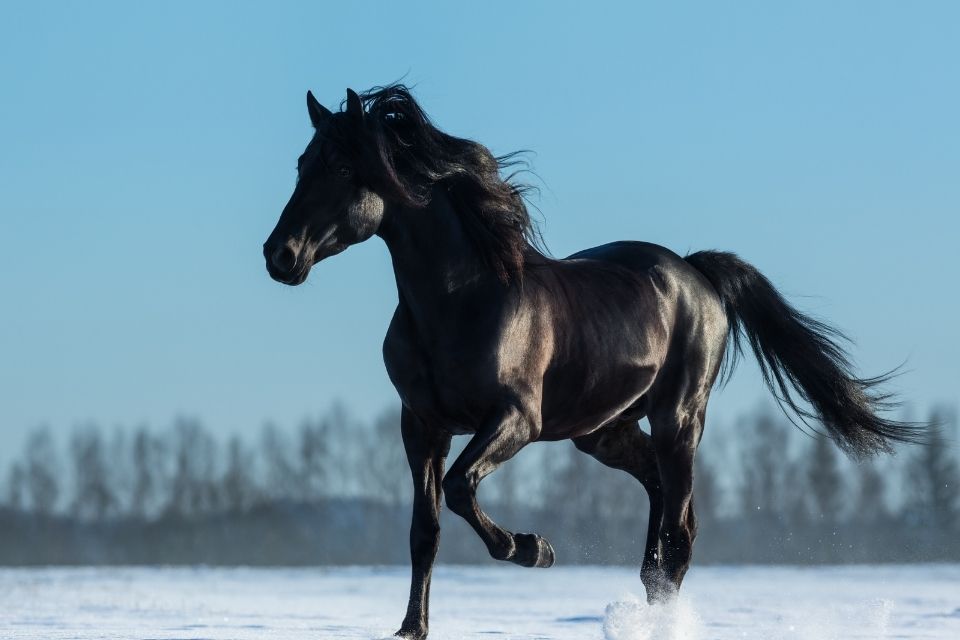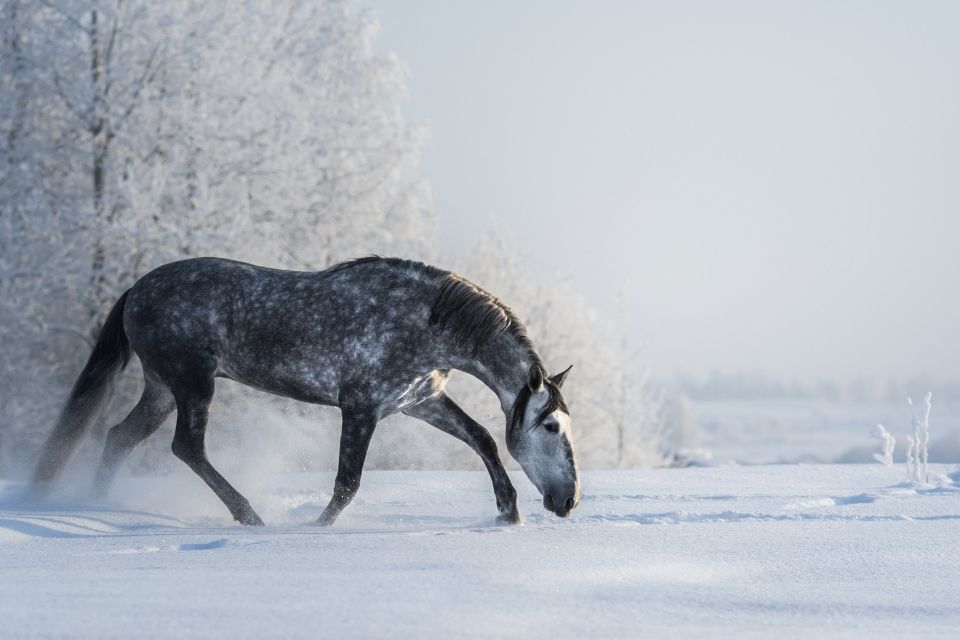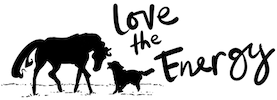
The story of the Andalusian horse is one of near extinction, dedication, and triumph. Today, the challenging past has given way to worldwide recognition and a beloved breed that has captured the imagination of people everywhere. It’s not just their beauty and their story that captivates people though. Andalusians are intelligent horses, easy to train, and also very docile. That makes them fun to ride and be around.
History weaved together the Andalusian with the Lusitano horse, its neighbor from Portugal on the Iberian Peninsula. However, each is a distinct breed. Andalusians and Lusitanos share common ancestors in the wild horses that once roamed the Iberian Peninsula over 25,000 years ago. The two breeds shared a studbook for many years. In the 1960s the breeds separated with Andalusians based in Spain and Lusitanos based in Portugal.
Andalusians and Lusitanos are also called Iberian horses. Pura Raza Espanola or PRE is the official name for the Andalusians everywhere except the United States. Iberian horses improved other breeds with their blood. However, the strengths and characteristics of the Andalusians warrant their own recognition.
History of the Andalusian Horse
Horses’ contributions to our livelihoods, whether through transportation, raising food crops, or exploring new places allowed humans to advance. Iberian horses were one of the first breeds domesticated; although they weren’t known as Andalusians at that time!
The Carthusian Monks bred Iberian horses in the Middle Ages and helped preserve and grow the breed. Kings rode Andalusians and all who saw them or owned one revered them. Andalusians were a status symbol for royalty, bullfighters, and warriors. In fact, Hannibal (a Carthaginian general) and William the Conqueror both rode Andalusians. Then, in 1567, Philip II of Spain established the Royal Stables of Cordoba to create the ultimate dressage horse with the Andalusian horse.

Threats to the Breed
Many horsepersons recognized the strengths of the breed. Andalusians were imported to Portugal to improve the Lusitano breed in the 1500s and 1600s. But then in the 1800s and 1900s, the number of Andalusian horses had decreased dramatically. Causes included war, then being replaced by drafts and Warmbloods in the military, disease, and crossbreeding.
Napoleon invaded Spain during the Napoleonic Wars and stole many Andalusian horses. A hidden herd was later able to revive the breed. A revolt against the Catholic Church, one of the major breeders, shrank numbers. A virus outbreak in the 1830s decimated horse numbers in Spain. There was a revolt in 1936 that brought the number of Andalusians to dangerously low levels. Spain and Portugal stopped exports until registry numbers stabilized. They didn’t allow any exports to start again until the 1960s. The efforts of many dedicated Andalusian enthusiasts saved the breed.
Breed Characteristics
The registry in Spain determines and maintains breed characteristics. Height minimums are 14.3 hands high for mares and 15 hands for stallions/geldings. The average height of an Andalusian is slightly smaller than the Lusitano horses from Portugal. Andalusians can be any color, even spotted patterns, although most are gray or bay. The breed does register buckskins, cremellos, and other rarer colors.
Andalusians are beautiful, elegant horses and create this romantic image that so many of us associate with them. They have thick, flowing manes and tails, long necks, powerful hindquarters, and clean, straight legs with no feathers. Their nose is straighter than the Lusitano (e.g., not a Roman nose).
This beauty translates into their movement as well, with elevated and round gaits that are pleasurable to ride or watch. Their gaits and conformation make them ideal for dressage and they have the athleticism required to successfully advance to the upper levels. Sport horses were the breeding focus after bullfighting was outlawed in the 1700s. Breeders used Arabian horses to further improve Andalusian characteristics in the 1800s.
The Andalusian Today
Many Andalusians are training and competing in dressage, and they are stars in that discipline. They’re also popular saddle and driving horses. Their original uses of bullfighting or working cattle and on the battlefields are no longer the norm, although the Andalusians’ temperament makes them an ideal stock horse for working cattle.
The Cría Caballar de las Fuerzas Armadas, part of the Spanish Ministry of Defense, maintains the studbook and registry. The breed has reached safer population levels, with over 200,000 in Spain and over 11,000 in the United States.
Working equitation is a newer discipline that combines dressage and obstacle work. Andalusians are rising to prominence in the discipline in Europe and the United States. Riding an Andalusian makes us all feel like we are royalty. The perseverance and resilience of this breed are a testament to the strength of the horses and all who love them.
Sources: Horse and Foals, Horse Illustrated, International Andalusian and Lusitano Horse Association, Oklahoma State University
